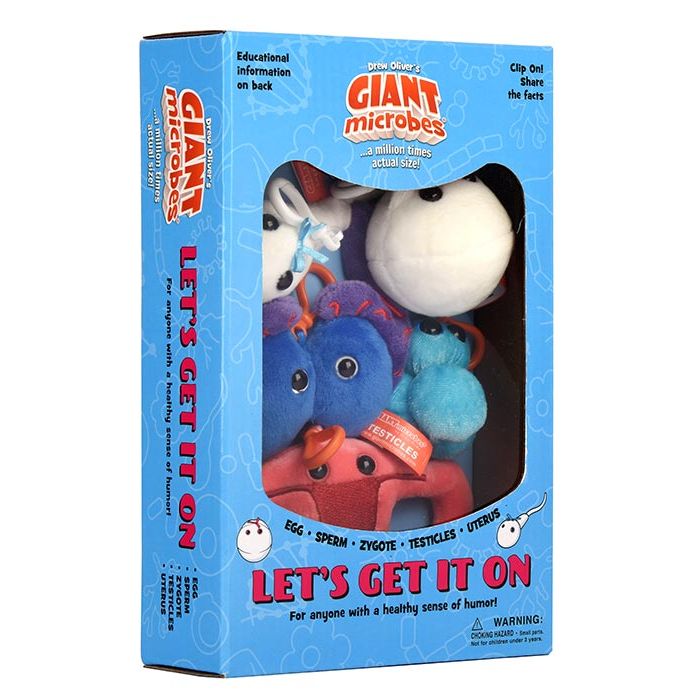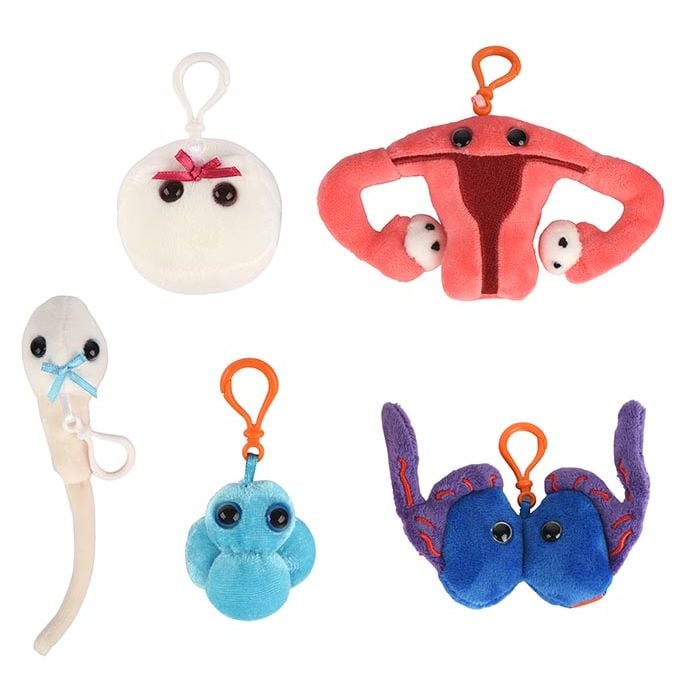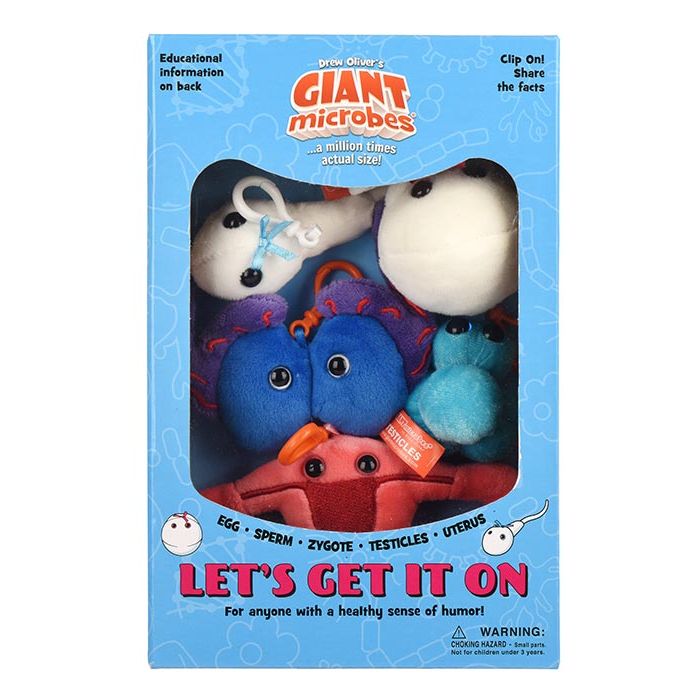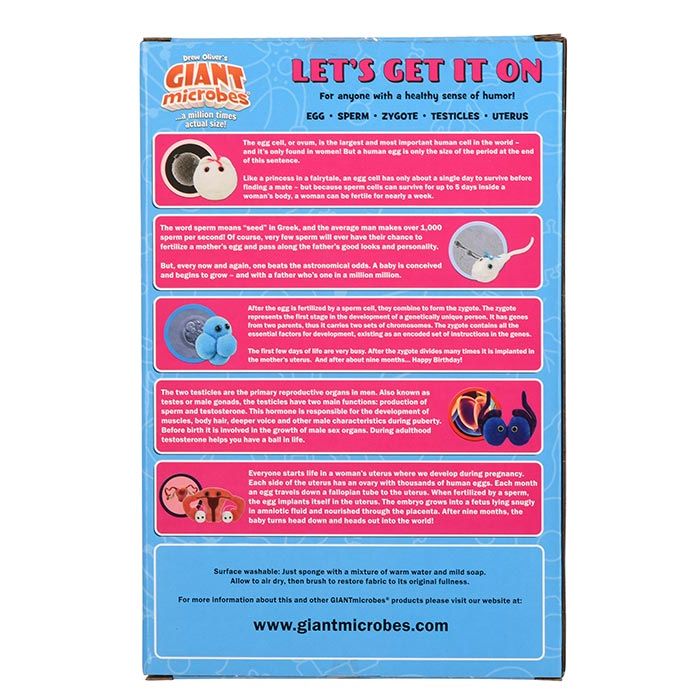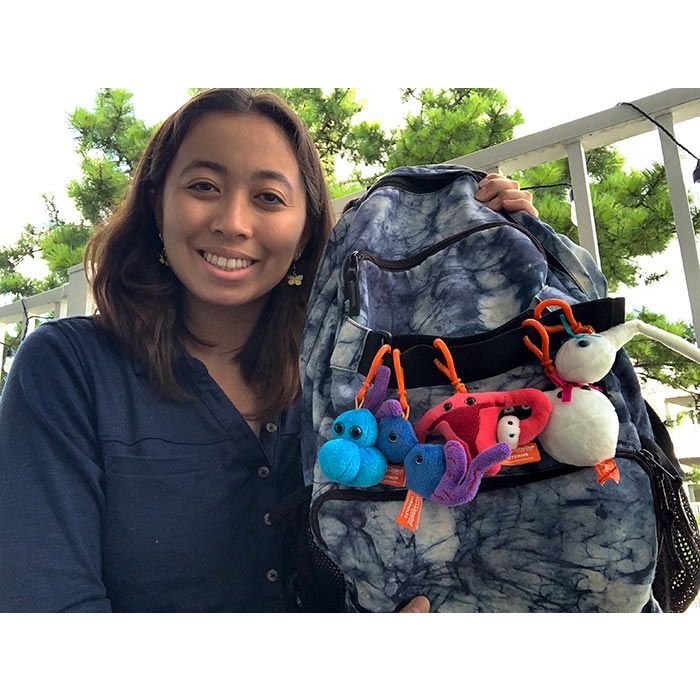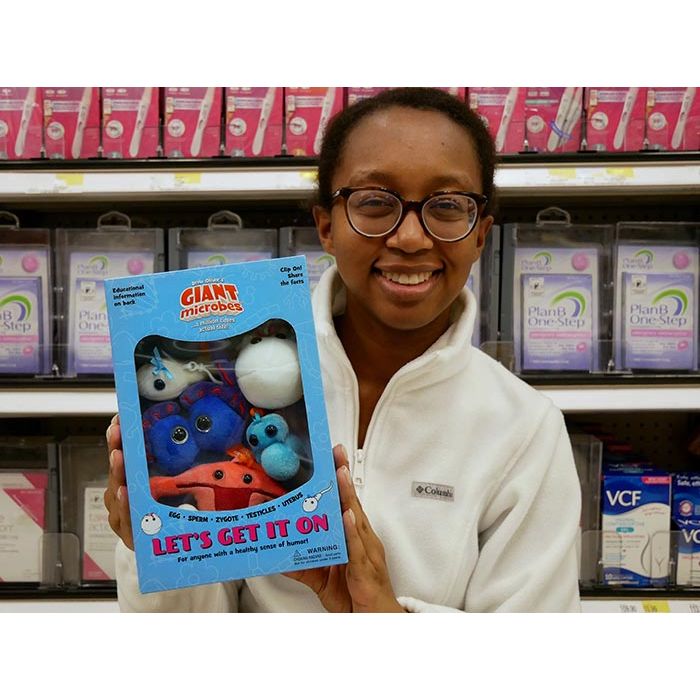Let's Get It On
Out of Stock
Let's Get It On themed gift box includes these mini microbes: Egg Cell, Sperm Cell, Zygote, Testicles and Uterus.
Clip them onto your backpack, keys or anywhere! Includes key ring clips.
Product Details
Additional Information
| Sizes | Giantmicrobes are based on actual microbes, cells, organisms and other critters, only 1,000,000 times actual size! Gigantic (GG) 40-60cm XL (XL) 25-38cm Original (PD) 12-20cm Minis (MM) 5-10cm each Keychain (KC) 5-10cm with clip |
|---|---|
| Materials | Plush from all new materials. Stuffed with polyester fiber fill. Surface washable: sponge with water & soap, air dry. |
| Packaging | Each plush microbe includes a printed card with fun, educational and fascinating facts about the actual microbe or cell. |
| Safety | Every product meets or exceeds U.S. and European standards for safety. For ages 3 and up. |
All about Let's Get It On
Egg Cell
The egg cell, or ovum, is the largest and most important human cell in the world – and it’s only found in women! But a human egg is only the size of the period at the end of this sentence.
Like a princess in a fairytale, an egg cell has only about a single day to survive before finding a mate – but because sperm cells can survive for up to 5 days inside a woman’s body, a woman can be fertile for nearly a week.
Sperm Cell
The word sperm means “seed” in Greek, and the average man makes over 1,000 sperm per second! Of course, very few sperm will ever have their chance to fertilize a mother’s egg and pass along the father’s good looks and personality.
But, every now and again, one beats the astronomical odds. A baby is conceived and begins to grow – and with a father who’s one in a million million.
Stem Cell
Stem cells are very special cells because they have no specialty except to remain ready, willing, and able to become, someday, whatever is needed.
In the first few days of a person’s life a lot of cellular construction work is required immediately to put you together. Stem cells spring into action, differentiating into the myriad cells that make you who you are. They are called pluripotent because they can differentiate into anything they want.
Zygote
After the egg is fertilized by a sperm cell, they combine to form the zygote. The zygote represents the first stage in the development of a genetically unique person. It has genes from two parents, thus it carries two sets of chromosomes. The zygote contains all the essential factors for development, existing as an encoded set of instructions in the genes.
The first few days of life are very busy. After the zygote divides many times it is implanted in the mother’s uterus. And after about nine months… Happy Birthday!
DNA
Deoxyribonucleic acid, or DNA, is the amazing molecular double helix that contains the genetic codes for all known life. First identified in 1869 and accurately described in 1953, its very existence provides a new understanding about how life works.
99% of the DNA in every individual is identical – and indeed, much of our DNA is shared with every living creature on Earth.









